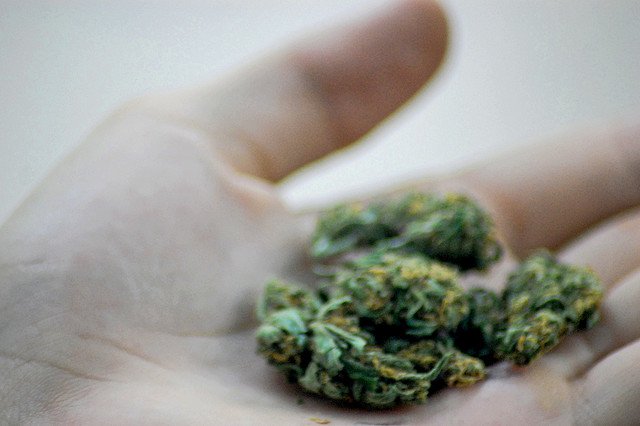You are here
Home 🌿 Recreational Marijuana News 🌿 Stiff competition could see some cannabis retail stores in Ontario having to close their doors: OCS 🌿Stiff competition could see some cannabis retail stores in Ontario having to close their doors: OCS

The head of the Ontario Cannabis Store (OCS) says the growth of weed retail in the province has been impressive, but people should be prepared for some “market right-sizing” as a result of an increasingly competitive environment.
It is anticipated that Ontario cannabis retail will continue to grow, possibly reaching 1,000 stores by this September, David Lobo, interim president and CEO of the OCS, writes in the agency’s newly released annual report, covering the Apr. 1, 2020 to Mar. 31, 2021 period.
In all, 99,100,000 grams of legal recreational cannabis valued at about $840.1 million was sold in the province during the fiscal year, representing a 182 per cent hike in volume over the previous year.
Dried flower was the most popular product category, accounting for more than 59 per cent of sales, followed by vapes and pre-rolls, at 16 per cent and 12 per cent, respectively. Edibles made up just four per cent of all sales.
But rapid growth — when the annual report was published, Ontario had 800-plus stores, up from 53 in April 2020 — will likely inspire shifting and adjusting, namely right-sizing, Lobo notes in his report message, “A Year of Growth Against All Odds.”
That could see some retailers close down once faced with increased competition and a crowded marketplace. “Other retail stores may choose to participate in mergers and acquisitions to increase their size and scale, and, presumably, drive down their operating costs,” Lobo writes.
That will make it all the more important for cannabis retail to target consumer segments and differentiate themselves from other stores, he suggests.
On the producer side, “additional consolidation activity is expected as the number of participants and licensed cultivation capacity continues to far exceed the size of domestic demand,” he points out.
Again, that will demand adjusting businesses “to accurately capture the right share of the addressable market in Canada.”

Ontario Cannabis Store, A Year in Review. / PHOTO BY ONTARIO CANNABIS STORE, A YEAR IN REVIEW
The OCS expectation is that product innovation and the pipeline of new products will “radically shift as producers leverage greater consumer insights and feedback, put more focus into targeted assortments and adopt more stringent CPG (consumer packaged goods) and traditional retail standards into their operations.”
The focus for all, Lobo writes, will need to be “on maintaining a culture of innovation centered on delighting legacy consumers with compelling legal offerings.”
As of the fourth quarter of 2020 in Ontario, illegal sources made up 55.9 per cent of the recreational cannabis market share compared to 44.1 per cent for legal.
However, the legal percentages have been growing steadily, rising from 25.1 per cent in the first quarter of 2020 to 36.2 per cent in the second quarter and 43.1 per cent in the third.
But Lobo appears confident retailers will be able to get the job done. “If we stay on the right course, this new legal cannabis industry will most certainly establish itself as an important engine that helps drive Ontario toward economic recovery in the months and years ahead,” he notes.

Ontario Cannabis Store, A Year in Review. / PHOTO BY ONTARIO CANNABIS STORE
Emphasizing that cannabis retail has done an admirable job in the wake of COVID-19, Lobo writes that advances have been made to cut into the legacy market.
That progress “deserves celebration,” he notes, pointing out that the legal market “consistently grew its rate of market capture and percentage of national sales,” despite the challenges presented by a global pandemic.
The performance was primarily driven by more retail points of access, advances in product innovation and quality, and gradual acceptance among consumers around shopping legal.
Even so, Lobo acknowledges, “persistent illegal operators continued to fight for the attention of consumers.”
Retailers will surely continue efforts to gain more market share from legacy consumers, he suggests, adding that pricing could help advance that goal. “Product pricing on OCS.ca and retail stores became more competitive in 2020-2021, and on average prices are almost a dollar per gram lower than prices found through illegal online sellers,” he writes.
Specifically, by the end of Q4 2020, the report notes that the average price per gram for dried flower on OCS.ca decreased to $6.17 and to $8.87 for retail stores.
“The gap for premium quality, large format dried flower will begin to close in the months ahead as demand for these products emerge,” the report contends.
Lobo also offered a welcome nod to the fact that legal dried products have started shedding their once-negative reputation “as being dry and stale” and the rise in craft cannabis producers.
420 Intel is Your Source for Marijuana News
420 Intel Canada is your leading news source for the Canadian cannabis industry. Get the latest updates on Canadian cannabis stocks and developments on how Canada continues to be a major player in the worldwide recreational and medical cannabis industry.
420 Intel Canada is the Canadian Industry news outlet that will keep you updated on how these Canadian developments in recreational and medical marijuana will impact the country and the world. Our commitment is to bring you the most important cannabis news stories from across Canada every day of the week.
Marijuana industry news is a constant endeavor with new developments each day. For marijuana news across the True North, 420 Intel Canada promises to bring you quality, Canadian, cannabis industry news.
You can get 420 Intel news delivered directly to your inbox by signing up for our daily marijuana news, ensuring you’re always kept up to date on the ever-changing cannabis industry. To stay even better informed about marijuana legalization news follow us on Twitter, Facebook and LinkedIn.




